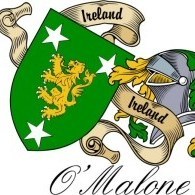All Activity
- Past hour
-
jayaitch started following Sheffield Indexers site assistance
-
HI, can anyone help? I have used the Sheffield Indexers site in the past but now it is not revealing any results. Has anyone else had problems?
- Today
-
Ponytail started following Herbert Housley
-
H. Housely & Sons Ltd. https://www.hawleysheffieldknives.com/n-fulldetails.php?val=h&kel=968
-
tozzin started following Herbert Housley
-
Sad to read of the death of Sheffield cutlery manufacturer, Herbert Housley, his life touched so many others, one of the last great “ Little Mesters “ of Sheffield.
-

[Old] Barrack Tavern - Pedestrian event, 1850
Edmund replied to Arthur C Fisher's topic in Sheffield Pubs and WMC's
Mr Manks (born on 3rd May 1818 in Knowle, Warwickshire), married Elizabeth Winsper at Rotherham in February 1848. He was a brick maker by trade, but briefly ran the Blue Boar pub in Cross Burgess street from 1847 until late 1848. His competitive debut was in 1843 possibly at the Sheffield Hyde Park ground - an early competition involved wheeling heavy barrows loaded with stones. In 1847 he beat Mr Hicks, the task involving picking up 300 stones a yard apart, which took him eight hours. In the same year he competed at Hyde Park for a £15 prize. His opponent Henry Mollineaux, a Halifax butcher was diddled out of £29 16s which he had left for safekeeping with the wife of the Hyde Park landlord. He also competed in shorter races, such as ten miles races against Tallick at Newton-in-the-Willows and against Greenhalgh at Knutsford. In 1851 he went on to repeat his 1850 Sheffield feat in London - he began on Friday 10th October 1851, completing the task on 31st October in front of 3,000 spectators. His diet consisted of game, beef, mutton, strong beef tea, old ale and tea with brandy at night. With just 9 miles to go he 'refused to rise and cried like a child'. But he was persuaded by the time-keeper to complete the challenge. Here is an engraving of the event: Richard Manks, known as the Warwickshire Antelope, died of a burst blood vessel at the General Hospital aged 51. His remains were removed to the premises of John Young, the Royal Oak, in Pond lane and he was buried in the General Cemetery on 3rd March 1869. -
Thank you, a very interesting read! Anf I agree he has fabulous sideburns
-
Arthur C Fisher started following [Old] Barrack Tavern - Pedestrian event, 1850
-

[Old] Barrack Tavern - Pedestrian event, 1850
Arthur C Fisher posted a topic in Sheffield Pubs and WMC's
Sheffield Independent - Saturday 03 August 1850 Page 6 GREAT PEDESTRIAN FEAT Some weeks ago, we called attention to a match then coming off, at the Barrack Tavern cricket ground — Richard Manks, a pedestrian of considerable notoriety, having engaged to walk a thousand miles in a thousand consecutive hours. At first, this announcement excited but little interest, it being generally considered that it would not be accomplished ; but as the time drew nigh for its termination, and Manks had so far performed his task, it gradually gained on the attention of the public, and at length the interest became so intense that the neighbourhood of the spot was frequently thronged with visitors to the now famous pedestrian. The match, it is said, originated in a conversation among some convivials at the Barrack Tavern, respecting the various feats of pedestrianism which had at different periods been performed, and more especially of the famous undertaking of Captain Barclay. A proposal was made by [landlord] Mr. Broadbent, to give the sum of £.30 to any person who should, on that ground, perform a similar feat. This was accepted by Manks, who undertook to exceed Captain Barclay's exploit. Captain Barclay walked the last quarter of one hour and the first quarter of the next, thereby reserving to himself an hour and a half for sleep. Manks undertook to start at the strike of every hour, thus shortening the interval of repose, and adding considerably to the difficulty of the task. There was, however, a reservation, that if his constitution failed under it, he should be allowed to avail himself of the alternative, to complete the undertaking by going to his task the last quarter of one hour and first quarter of the next. Soon after five, on the afternoon of Monday, June 17, Manks entered on his task ; and watchers were appointed to see that he faithfully executed the conditions of his contract. - Yesterday
-
Kalfred started following Thomas Wilkinson & Son Incorporated with William Whiteley & Sons, Scissors Manufacturers
-

Thomas Wilkinson & Son Incorporated with William Whiteley & Sons, Scissors Manufacturers
Kalfred replied to Ponytail's topic in Made In Sheffield
Hello, Ponytail has posted some fancy scissor images so here is a bit more mundane (and delightful) pair. I think these could be a pair of the "Wilkinson’s brass-handled tailors’ scissors" that "were particularly popular" as described on Hawley's "Name On A Knife Blade" site. The enlarged image shows the trademark imaged on the Forum post linked previously by Ponytail and below. Kalfred -
tozzin started following Samuel Plimsoll
-
I'm sure his mother finally lived in College Street.
- Last week
-
Aaron James Hartley started following George & Dragon
-
Alastair started following Dorset Street & Gloucester Street Area
-

Dorset Street & Gloucester Street Area
Alastair replied to Stringy72's topic in Sheffield History Chat
I was surprised to see this reference to Havelock Square today. It's at the Ecclesall Road entrance to Waitrose car park. Even if they couldn't quite spell it, who of that age would remember the name Havelock Square? It's been Holberry Gardens for decades. -
Kitch started following Kitchen Family
-
Hello Gillian, Many apologies for the very late response but I've had to create a new username as the email address I originally quoted is long obsolete. Yes, Sydney and Joyce were my parents. I would love to see the photos you mentioned! Best Wishes, Peter
-
Lysanderix started following The Palace Theatre in Attercliffe
-

The Palace Theatre in Attercliffe
Lysanderix replied to Sheffield History's topic in Sheffield CInemas and Theatres
It was the place where many of us went for a free sear at a Pantomime ,courtesy of a Working Man’s Club. Even a child recognised the productions were a bit threadbare! But, hey, it was free and we all loved it! -
The school set up by Samuel Plimsoll's sisters started on Jan. 14,1839 at 70 Broomhall street (see Sheffield Independent -12 January 1839). It later moved to the Plimsolls' home at 50 Regent Street. Then in 1841 it moved again, with Eleanor only to 12. Gell street (Sheffield Independent -10 July 1841). I have found no evidence, David Masters aside, that it was ever at 46!
-
 Janet Munro joined the community
Janet Munro joined the community -
 Natalie Richter joined the community
Natalie Richter joined the community -

Dore & Totley Station
History dude replied to southside's topic in Sheffield Buses, Trams and Trains
Just seen a picture of the new footbridge, and it looks a bit like Lego flanked by what look like Fire Station towers! -
Remember the back row was always popular Lol double kissing seats ❤️ great days
-
Many thanks Edmund, really helpful
-
-
Hi togger, Info from: Public Notice in Daily Independent 2nd January 1935 listing clearance schedules under the 1925 and 1930 Housing Acts various adverts in Sheffield Independent and Evening Telegraph from 1869 - 1903 Littlewood family, coal merchants, at 69 Edward street. William Lewis Littlewood operated a number of boats (at least 5) in the coal trade on the Canal, he died in 1900.
-
Not certain ,but I seem to remember there was a house on the site. As an 11 year old , once a fortnight, our class would queue at the adjacent bus stop to catch the Circular bus back to FPGS …..after swimming lessons at Hillsboro baths.
-
Many thanks Edmund, really appreciate the help. The information about the passage way is interesting to me. Can I ask where you extracted the information from please?
-
I'm trying to find out more about this site near Hillsborough corner, which is currently being looked after as a community garden. I haven't been able to find a photo of it from the past. Any info gratefully received by the group
-
Traction engines operated by Coupe Bros of Carlisle Street East, laying electricity cable supplied by W.T. Glover Ltd of Trafford Park. It would be nice to learn where abouts in Sheffield they were working?
-
 Soobidoo joined the community
Soobidoo joined the community -

Moulson Brothers, Merchants and Manufacturers of Saws and Edge Tools etc., Union Works, Division Street
tozzin replied to Ponytail's topic in Made In Sheffield
Moulson Brothers Saw & Edge Tool manufacturers Union Works Green Lane The faded name of Moulson Brothers Saw & Edge Tool manufacturers on what was the Union Works entrance on Green Lane, its now part of a flats complex on another world famous manufacturers of Files & Saws Alfred Becket’s Brooklyn Works, when I spotted this gateway, I could see some faded writing but I could work out the manufacturers name, I could see it was Union Works and on further research I found it was part of the Moulson Brothers little tools empire. Moulson had been launched by the 1820s as a maker of saws and joiners' tools and by the 1830s was based in Union Works, Division St. Thomas and John Moulson appears to have been the brothers involved, though by 1850 other members of the family were active. Although they specialised in tools, the Moulson’s also traded in cutlery. Moulson Bros had an office in Pearl St, New York, by 1850. Moulson Bros best known partner was Thomas Moulson, who became Master Cutler in 1854. He was censured by the Company of Cutlers in his year of office for expressing the view after the Paris Exhibition that the Sheffield trade was backward and declining. Several Moulson partners died in the early 1860s. These included Thomas Moulson of Machon Bank, on 4 December 1862, aged 70. He was buried in Ecclesall. Joseph Moulson died 7 December 1866, aged 43. John Moulson of Stone Grove, died on 6 January 1864 aged 69, and was also buried in Ecclesall. The firm continued to trade on Division St under new Moulson managers, such as William Henry Moulson. A further company, John Moulson, was listed in 1868 as a merchant and manufacturer of table and spring knives, and edge tools, at Globe Works, Penistone Rd. It seems likely that the owner was a descendent of one of the Moulson Bros. John Moulson-like other cutlers at the Globe Works, Ibbotson Bros, Walter & Unwin & Rodgers had cultivated the American trade. He was described as an American Agent with a New York Office. Henry Elliott was John's agent in Sheffield and he also worked for Moulson Brothers. By 1875 that company was bankrupt, with debts of over £6.000 a situation that was not helped when in the following year Elliott embezzled £2.000 and absconded to America, he did return to face the music. In the 1880s, both John Moulson and Moulson Bros were listed at the same address in Division St and Green Lane. William Henry Moulson withdrew from Moulson Bros & Co in 1880, leaving the business to his partner Thomas Griffiths. However Moulson Bros had ceased trading by the end of that decade. William Henry Moulson, of Broomgrove Road, died 7 Feb 1890 aged 64 and was buried on the 1st of March in the Ecclesall church of All Saints. John Moulson appears to have retired in about 1885. The New York Times 8 Feb 1901, recorded his death on the previous day at Grosvenor Hotel and commented that he: “was well known in the cutlery trade in this city. He came from Sheffield, England, in 1849, as a salesman and became later the American agent for an English cutlery house. He retired from business about fifteen years ago, and had lived since that time at the Brevoort House and layer at the Grosvenor“. As tool collectors all over the world, Sheffield Tools are highly prized as these tools still perform their tasks like they did on their day of manufacture, In the case of Robert Sorby and Sons the factory was known as Kangaroo Works. The kangaroo itself was one of a number of registered trade marks used extensively until the 1980's. The presence of Robert Sorby in the Antipodes is further reflected by medals and diplomas of distinction awarded in both New Zealand and Australia as well as in London, Edinburgh and Calcutta. Robert Sorby left the Kangaroo Works in 1934, the building was demolished in 2008 with only the archway surviving. This has been lovingly restored and opened to the public in March 2010 as part of the Hawley Collection at Kelham Island Museum, Sheffield. Robert Sorby products are sold all over the world to hobbyist and professional woodworkers alike who seek tools of the highest quality. The product range is by no means as wide as in previous years but is far deeper with particular specialisation in three woodworking areas - wood turning, wood carving and cabinet making. The invention of crucible steel by Benjamin Huntsman in Sheffield in 1742 was a real boon to the edge tool manufacturers for this uniform, higher grade of steel - far superior to anything else available in the world at the time - gave them a march on their competitors worldwide. In 1833 there were 59 edge tool and 74 saw makers registered in Sheffield. By 1860 these figures had increased to 78 and 100 respectively only to decline by 1888 to 68 and 86. Of those edge tool makers registered back in 1833 only Robert Sorby survives to this day. Indeed, it may be that Robert Sorby is the oldest manufacturer of hand tools in Sheffield. Certainly it is one of the oldest surviving companies of all types in the city. Many of those businesses were little more than one- or two-man operations based on the cutlers' "Little Mesters" principle whereby many workers were self-employed and allowed to rent space in a workshop. My two Yorkshire Dumplings Mr Dawson & Mr Sorsby are quite chuffed at their sudden fame thanks to the Retro, they now hand out business cards emblazoned with a Cabbage! One further thing on the Union Works gateway, the name of Barton’s Stables can be just seen, this man had stables in the Castle House on Ladysbridge and was a Vet at the Dogs Home that was opened there. -
 ChrisSF joined the community
ChrisSF joined the community -
Number 69 was demolished under Clearance Order 74A, 1934. These houses appear on the 1851 Ordnance Survey map. There was an archway (through to the coal dealer's yard?) between nos. 65 and 69 that had a store above it. The Hogan family appear to be the final residents of no. 69 during 1935, their son John at St. Vincents RC School passed his Secondary School Scholarship exam in July.




















